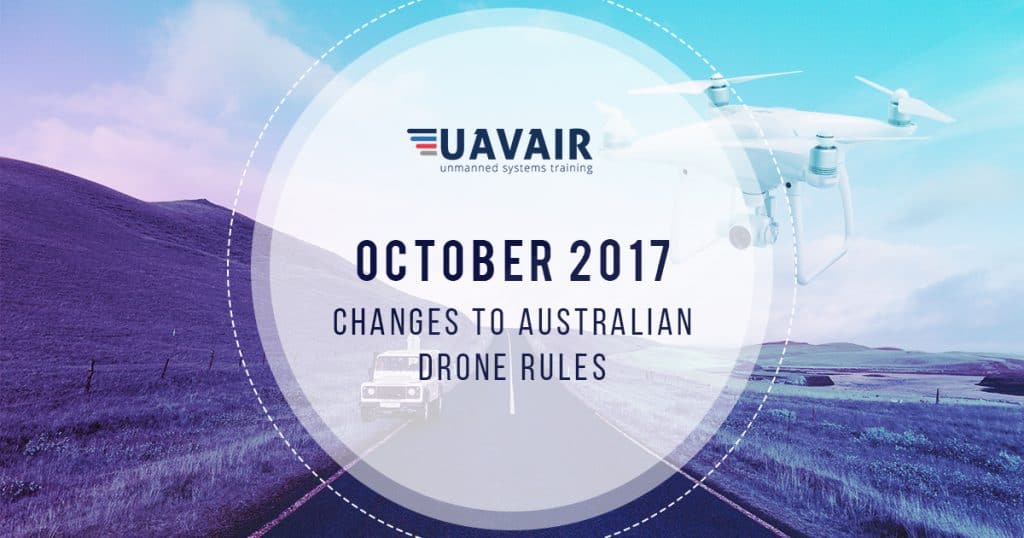As of 20 October 2017, the Civil Aviation Safety Authority induced a revision of the rules for Drone pilots giving greater clarity on what we could and could not do. There was a huge amount of ambiguity surrounding these previously, leading to a great deal of conjecture and debate between recreational, sub 2kg and RePL / ReOC RPAS operators. These changes have been made binding in law until there is a change in the regulations.
The changes primarily effect recreational and sub2kg flying around controlled and uncontrolled aerodromes as well as helicopter landing sites.
Recreational flyers;
- Introduction of a specific website for recreational flyers – droneflyer.com.au with all information including a pop-quiz to test your understanding of the rules as a recreational flyer.
- now cannot fly their drones greater than 400’ aligning them with sub2kg and RePL operators.
- cannot fly directly overhead, regardless of height
- cannot fly your drone in restricted areas such as Sydney Harbour.
- flying drones greater than 100g now cannot fly within 3nm of a controlled aerodrome.
- flying drones greater than 100g within 3nm of a non-controlled aerodrome or helicopter landing site, have to abide by the advisory circular issued earlier this year. If the uncontrolled aerodrome or helicopter landing site becomes active, then the onus is on the recreational flyer to put their craft on the ground out of harm’s way.
Sub 2kg Operators;
- flying drones greater than 100g within 3nm of a non-controlled aerodrome or helicopter landing site, have to abide by the advisory circular issued earlier this year. If the uncontrolled aerodrome or helicopter landing site becomes active, then the onus is on the recreational flyer to put their craft on the ground out of harm’s way.
- Cannot fly overhead, regardless of height.
- Cannot fly your drone in restricted areas such as Sydney Harbour.
Remote Licenced Pilots (RePL)
- There’s really no changes to the way you fly, flying within 3nm of a controlled aerodrome still requires an area approval each time you fly in that location.
- Flying in and around uncontrolled aerodromes and helicopter landing sites, whilst it’s good to follow the advisory circular issued by CASA, as you are Aeronautical Radio licenced operators, you can operate as you wish as long as you’ve completed your risk assessment, and have an operational air-band radio, you’re good to fly. If you don’t have that operational air-band radio, then stick to the advisory circular.
If you can find further information on flying drones safely at casa.gov.au, and click on the drones link. There you will find the CASA “Can I Fly There” app, which can be used as a guide only for your location your flying. Please keep in mind, this app is not approved for use by Air Services Australia that produce all aviation publications including charts.
You can also find more information on;
- Flying for fun.
- Flying commercially
- Resources, brochures and FAQs
- Using your drone near emergencies
- Civil Aviation Safety Regulations Part 101
- Advisory Circulars for drone operations
- CASA 96/17 – Direction – operation of unmanned aircraft.
Remember, fines do apply for not flying your drone in accordance with the regulations, with fines as high as $10,500, and there are more RPAS Inspectors being employed by CASA, which means they could pop up anywhere.
If you have been thinking about getting licensed, or undertaking drone training to improve your understanding of drone safety, Australian airspace rules or to simply perfecting your flying skills, feel free to contact us on 1300 893 340 or check out our website (www.uavair.com.au). We run multiple courses including:
- Flight Foundations : perfect for Sub 2kg (ensures your eligibility for Public Liability Insurance from QBE).
- Certificate III in Aviation (Remote Pilot – Visual Line of Sight) : includes Remote Pilot License & Aeronautical Radio Operators Certificate.
- Foundations of Aerial Surveying : Collect accurate positional data in conjunction with Remotely Piloted Aircraft Systems (RPAS) photography.
- Sub 25kg Heavy Lift Training
Alternatively, for more information about the RPAS industry check out our blog.
